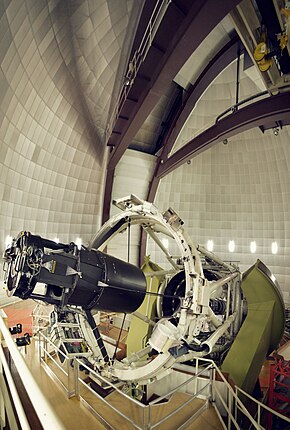
The cosmic microwave background is microwave radiation that fills all space in the observable universe. It is a remnant that provides an important source of data on the primordial universe. With a standard optical telescope, the background space between stars and galaxies is almost completely dark. However, a sufficiently sensitive radio telescope detects a faint background glow that is almost uniform and is not associated with any star, galaxy, or other object. This glow is strongest in the microwave region of the radio spectrum. The accidental discovery of the CMB in 1965 by American radio astronomers Arno Penzias and Robert Wilson was the culmination of work initiated in the 1940s.

In physics, a redshift is an increase in the wavelength, and corresponding decrease in the frequency and photon energy, of electromagnetic radiation. The opposite change, a decrease in wavelength and increase in frequency and energy, is known as a blueshift, or negative redshift. The terms derive from the colours red and blue which form the extremes of the visible light spectrum. The main causes of electromagnetic redshift in astronomy and cosmology are the relative motions of radiation sources, which give rise to the relativistic Doppler effect, and gravitational potentials, which gravitationally redshift escaping radiation. All sufficiently distant light sources show cosmological redshift corresponding to recession speeds proportional to their distances from Earth, a fact known as Hubble's law that implies the universe is expanding.
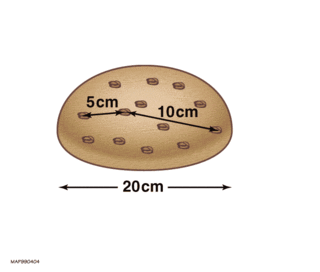
Hubble's law, also known as the Hubble–Lemaître law, is the observation in physical cosmology that galaxies are moving away from Earth at speeds proportional to their distance. In other words, the farther they are, the faster they are moving away from Earth. The velocity of the galaxies has been determined by their redshift, a shift of the light they emit toward the red end of the visible spectrum.

The Wilkinson Microwave Anisotropy Probe (WMAP), originally known as the Microwave Anisotropy Probe, was a NASA spacecraft operating from 2001 to 2010 which measured temperature differences across the sky in the cosmic microwave background (CMB) – the radiant heat remaining from the Big Bang. Headed by Professor Charles L. Bennett of Johns Hopkins University, the mission was developed in a joint partnership between the NASA Goddard Space Flight Center and Princeton University. The WMAP spacecraft was launched on 30 June 2001 from Florida. The WMAP mission succeeded the COBE space mission and was the second medium-class (MIDEX) spacecraft in the NASA Explorer program. In 2003, MAP was renamed WMAP in honor of cosmologist David Todd Wilkinson (1935–2002), who had been a member of the mission's science team. After nine years of operations, WMAP was switched off in 2010, following the launch of the more advanced Planck spacecraft by European Space Agency (ESA) in 2009.
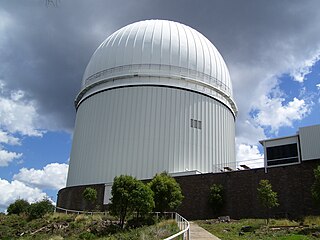
The Australian Astronomical Observatory (AAO), formerly the Anglo-Australian Observatory, was an optical and near-infrared astronomy observatory with its headquarters in North Ryde in suburban Sydney, Australia. Originally funded jointly by the United Kingdom and Australian governments, it was managed wholly by Australia's Department of Industry, Innovation, Science, Research and Tertiary Education. The AAO operated the 3.9-metre Anglo-Australian Telescope (AAT) and 1.2-metre UK Schmidt Telescope (UKST) at Siding Spring Observatory, located near the town of Coonabarabran, Australia.
Observational cosmology is the study of the structure, the evolution and the origin of the universe through observation, using instruments such as telescopes and cosmic ray detectors.
The Sloan Digital Sky Survey or SDSS is a major multi-spectral imaging and spectroscopic redshift survey using a dedicated 2.5-m wide-angle optical telescope at Apache Point Observatory in New Mexico, United States. The project began in 2000 and was named after the Alfred P. Sloan Foundation, which contributed significant funding.
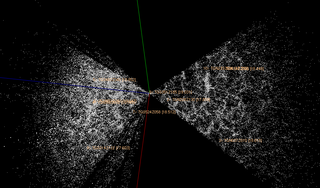
In astronomy, a redshift survey is a survey of a section of the sky to measure the redshift of astronomical objects: usually galaxies, but sometimes other objects such as galaxy clusters or quasars. Using Hubble's law, the redshift can be used to estimate the distance of an object from Earth. By combining redshift with angular position data, a redshift survey maps the 3D distribution of matter within a field of the sky. These observations are used to measure detailed statistical properties of the large-scale structure of the universe. In conjunction with observations of early structure in the cosmic microwave background, these results can place strong constraints on cosmological parameters such as the average matter density and the Hubble constant.

In astronomy, the 2dF Galaxy Redshift Survey, 2dF or 2dFGRS is a redshift survey conducted by the Australian Astronomical Observatory (AAO) with the 3.9m Anglo-Australian Telescope between 1997 and 11 April 2002. The data from this survey were made public on 30 June 2003. The survey determined the large-scale structure in two large slices of the Universe to a depth of around 2.5 billion light years. It was the world's largest redshift survey between 1998 and 2003. Matthew Colless, Richard Ellis, Steve Maddox and John Peacock were in charge of the project. Team members Shaun Cole and John Peacock were awarded a share of the 2014 Shaw Prize in astronomy for results from the 2dFGRS.
Karl Glazebrook is a British astronomer, known for his work on galaxy formation, for playing a key role in developing the "nod and shuffle" technique for doing redshift surveys with large telescopes, and for originating the Perl Data Language (PDL).
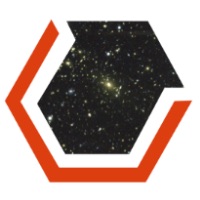
The Dark Energy Survey (DES) is an astronomical survey designed to constrain the properties of dark energy. It uses images taken in the near-ultraviolet, visible, and near-infrared to measure the expansion of the universe using Type Ia supernovae, baryon acoustic oscillations, the number of galaxy clusters, and weak gravitational lensing. The collaboration is composed of research institutions and universities from the United States, Australia, Brazil, the United Kingdom, Germany, Spain, and Switzerland. The collaboration is divided into several scientific working groups. The director of DES is Josh Frieman.
In physical cosmology and astronomy, dark energy is an unknown form of energy that affects the universe on the largest scales. Its primary effect is to drive the accelerating expansion of the universe. Assuming that the lambda-CDM model of cosmology is correct, dark energy is the dominant component of the universe, contributing 68% of the total energy in the present-day observable universe while dark matter and ordinary (baryonic) matter contribute 26% and 5%, respectively, and other components such as neutrinos and photons are nearly negligible. Dark energy's density is very low: 6×10−10 J/m3, much less than the density of ordinary matter or dark matter within galaxies. However, it dominates the universe's mass–energy content because it is uniform across space.
In cosmology, baryon acoustic oscillations (BAO) are fluctuations in the density of the visible baryonic matter of the universe, caused by acoustic density waves in the primordial plasma of the early universe. In the same way that supernovae provide a "standard candle" for astronomical observations, BAO matter clustering provides a "standard ruler" for length scale in cosmology. The length of this standard ruler is given by the maximum distance the acoustic waves could travel in the primordial plasma before the plasma cooled to the point where it became neutral atoms, which stopped the expansion of the plasma density waves, "freezing" them into place. The length of this standard ruler can be measured by looking at the large scale structure of matter using astronomical surveys. BAO measurements help cosmologists understand more about the nature of dark energy by constraining cosmological parameters.
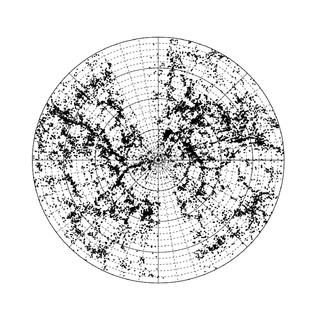
The 6dF Galaxy Survey, 6dF or 6dFGS is a redshift survey conducted by the Anglo-Australian Observatory (AAO) with the 1.2m UK Schmidt Telescope between 2001 and 2009. The data from this survey were made public on 31 March, 2009. The survey has mapped the nearby universe over nearly half the sky. Its 136,304 spectra have yielded 110,256 new extragalactic redshifts and a new catalog of 125,071 galaxies. For a subsample of 6dF a peculiar velocity survey is measuring mass distribution and bulk motions of the local Universe. As of July 2009, it is the third largest redshift survey next to the Sloan Digital Sky Survey (SDSS) and the 2dF Galaxy Redshift Survey (2dFGRS).

Euclid is a wide-angle space telescope with a 600-megapixel camera to record visible light, a near-infrared spectrometer, and photometer, to determine the redshift of detected galaxies. It was developed by the European Space Agency (ESA) and the Euclid Consortium and was launched on 1 July 2023.
In cosmology, intensity mapping is an observational technique for surveying the large-scale structure of the universe by using the integrated radio emission from unresolved gas clouds.

Warrick John Couch is an Australian professional astronomer. He is currently a professor at Swinburne University of Technology in Melbourne. He was previously the Director of Australia's largest optical observatory, the Australian Astronomical Observatory (AAO). He was also the president of the Australian Institute of Physics (2015–2017), and a non-executive director on the Board of the Giant Magellan Telescope Organization. He was a founding non-executive director of Astronomy Australia Limited.
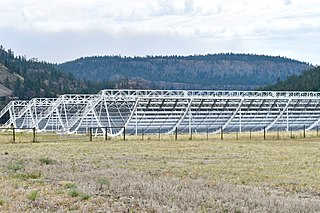
The Canadian Hydrogen Intensity Mapping Experiment (CHIME) is an interferometric radio telescope at the Dominion Radio Astrophysical Observatory in British Columbia, Canada which consists of four antennas consisting of 100 x 20 metre cylindrical parabolic reflectors with 1024 dual-polarization radio receivers suspended on a support above them. The antenna receives radio waves from hydrogen in space at frequencies in the 400–800 MHz range. The telescope's low-noise amplifiers are built with components adapted from the cellphone industry and its data are processed using a custom-built FPGA electronic system and 1000-processor high-performance GPGPU cluster. The telescope has no moving parts and observes half of the sky each day as the Earth turns.

The Dark Energy Spectroscopic Instrument (DESI) is a scientific research instrument for conducting spectrographic astronomical surveys of distant galaxies. Its main components are a focal plane containing 5,000 fiber-positioning robots, and a bank of spectrographs which are fed by the fibers. The new instrument will enable an experiment to probe the expansion history of the universe and the mysterious physics of dark energy.
The Hydrogen Intensity and Real-time Analysis eXperiment (HIRAX) is an interferometric array of 1024 6-meter (20ft) diameter radio telescopes, operating at 400-800MHz, that will be deployed at the Square Kilometer Array site in the Karoo region of South Africa. The array is designed to measure red-shifted 21-cm hydrogen line emission on large angular scales, in order to map out the baryon acoustic oscillations, and constrain models of dark energy and dark matter.
